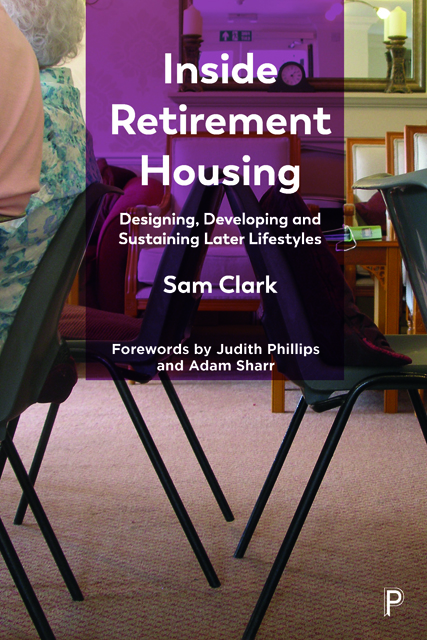10 - Architecture student
Published online by Cambridge University Press: 20 June 2023
Summary
Synopsis
This is a research story that captures the position of the architecture student responding to the dual challenges of designing housing (a complex design problem in and of itself) and accommodating an aged population. The story is located within a fictional setting – the Celtic School of Architecture (CSA) – and presents a composite student character known as August. Based on real events, the story reports on the design and research outputs of an undergraduate cohort – those engaged in the ‘Ageing Town’ design studio – and includes reflections on students’ terms of reference. It explores how architecture students think about designing for older people and, crucially, how they might extend their awareness of housing needs in later life. The story also captures something of the author’s position as an architectural educator.
This ‘reflective practitioner’ (Schon, 1984) account posits that the academic design studio can provide a space to explore research methodologies, involving short-term ‘cultural immersion’ or ‘empathic modelling’ and other fast ethnographic techniques, resulting in meaningful stakeholder engagement and potential to generate knowledge for and from design. Through this research story design teaching is considered a situated research practice, involving dialogic work – ‘a kind of exchange’ (Shreeve et al 2010) – with emerging products of architecture and their respective authors. Design teaching is inherently dialogic, involving regular one-to-one discussions with students, sharing ideas, developing design narratives, as well as rehearsing presentations and refining drawings and models. In this instance, the Ageing Town studio involved 20 students and two members of staff, meeting weekly for a period of 12 weeks. Two of the meetings comprised interim and final design reviews or ‘crits’, involving students presenting to their peer group and a panel of invited experts from the fields of architectural practice, design research and – exceptionally – gerontology.
Methods
Student voices were primarily captured through a mini focus group that was conducted one month after the final design review. Respondents were asked to reflect on learning outcomes from engaging with the studio’s agenda and their respective design projects. The focus group had the dynamic of a friendship circle or small family as students knew each other and their respective projects very well.
- Type
- Chapter
- Information
- Inside Retirement HousingDesigning, Developing and Sustaining Later Lifestyles, pp. 164 - 184Publisher: Bristol University PressPrint publication year: 2022

